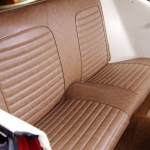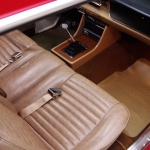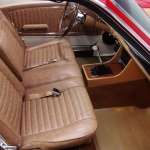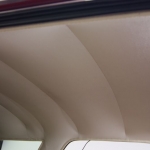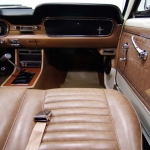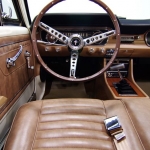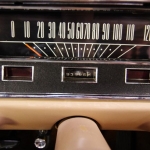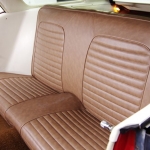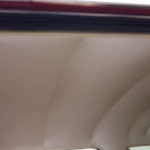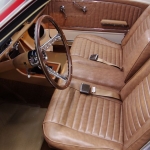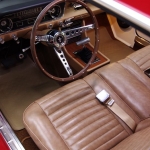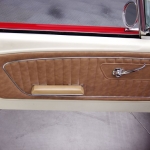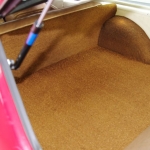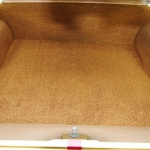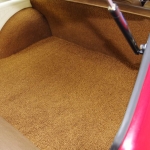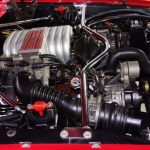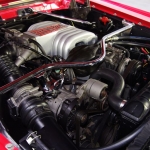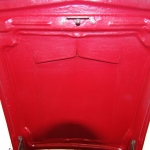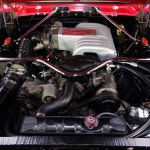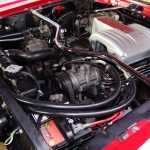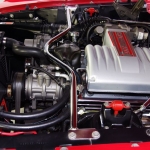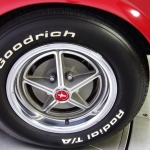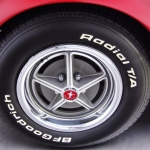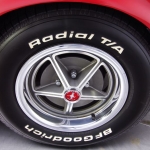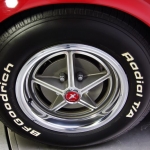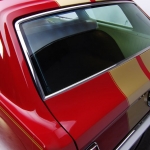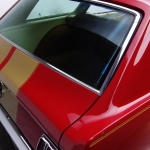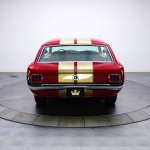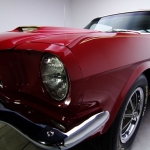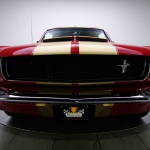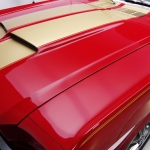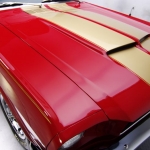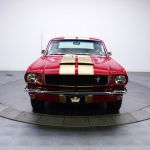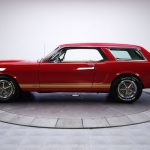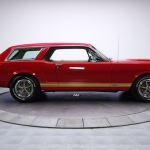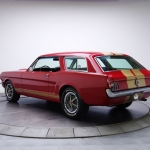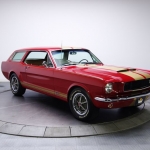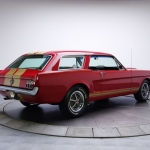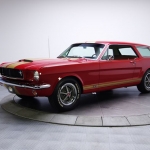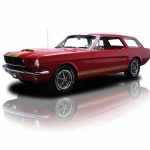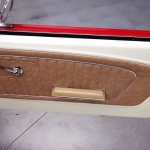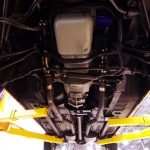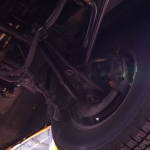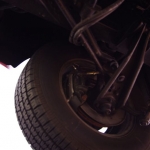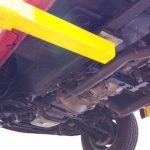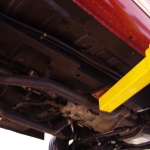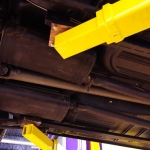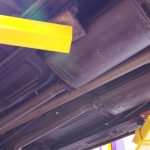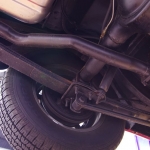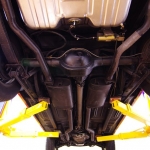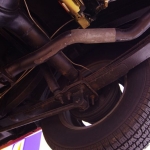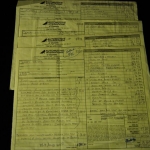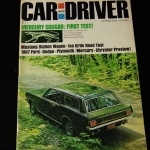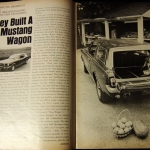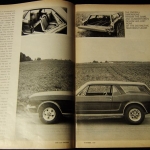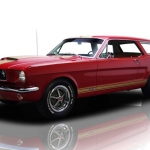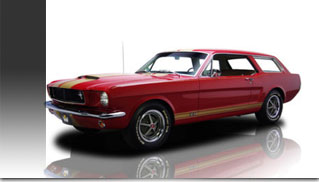 This is another incredible car, auctioned on eBay for US $59,900.00. The mythical Mustang wagonit has persisted since the earliest days of the Mustang, and even Ford had proposals on the drawing board. However, it appears that the first Mustang wagons were not built by Ford at all, but rather by Intermeccanica at the behest of the W.J. Thompson advertising agency. Constructed in 1965, the car may or may not still exist, but photos and magazine articles from the period still exist, and have inspired a few talented craftsmen to try their hands at creating their own Mustang wagons. This particular 1965 Mustang wagon was built by Joe Ramp and uses as many factory components as possible to create one of the most unique and eye-catching Mustangs you’ll ever see. Read more, watch the video, see the images!
This is another incredible car, auctioned on eBay for US $59,900.00. The mythical Mustang wagonit has persisted since the earliest days of the Mustang, and even Ford had proposals on the drawing board. However, it appears that the first Mustang wagons were not built by Ford at all, but rather by Intermeccanica at the behest of the W.J. Thompson advertising agency. Constructed in 1965, the car may or may not still exist, but photos and magazine articles from the period still exist, and have inspired a few talented craftsmen to try their hands at creating their own Mustang wagons. This particular 1965 Mustang wagon was built by Joe Ramp and uses as many factory components as possible to create one of the most unique and eye-catching Mustangs you’ll ever see. Read more, watch the video, see the images!
Designed to be driven rather than just a show piece, this Mustang has been extensively reengineered for its role as a hauler. Using 100% steel to create the wagon body meant finding a clean original coupe to use as a foundation. The original roof was retained and lengthened to meet the fabricated D-pillars out back. Side windows were fabricated, while the rear window is the original Mustang coupe piece, which fits so nicely it’s surprising that the factory never decided to go forward with the project. Proportions are excellent, with a sporty rake to the roofline that fits the Mustang’s performance image. Rear quarter windows were retained as well, making this Mustang more akin to the hardtop wagons of the ’50s rather than something your mother would drive. The integration into the original quarter panels is seamless, and the factory deck lid was extensively modified to finish the rear of the car with an OEM look. Brilliant red paint covers the beautiful wagon’s shape, and shows off the unique metalwork and expert fabrication in fine fashion. Gold Shelby-style stripes were added, as well as a hood with an integrated scoop, making this an interesting study in “what ifs.” Finish work is as good as any restoration, and it’s virtually impossible to find any evidence that this is a hand-made one-off rather than a factory-built piece.
To keep the Mustang looking like a Mustang, all the original chrome was retained, including the slender front and rear bumpers, as well as the trademark Mustang 3-element tail lights. Up front there’s a Shelby-style grille with offset pony emblem, and all the original stainless trim was polished. The trim around the rear windows seems to be borrowed from another Ford product, and looks completely OEM in execution. Shelby stripes were used on the rockers, but instead of trying to dress this one up as a fake GT350, Mr. Ramp decided to advertise the engine under the hood instead: Ford’s venerable 5.0 liter V8. All the glass is Mustang-issue except for the rear side windows, which were custom made, and access to the rear cargo area is via the rear window, which opens like a hatch.
The mighty 5.0 is second only to the small block Chevy in terms of adaptability, longevity, and the size of its aftermarket parts industry. Externally the same size as the 289, it’s an easy fit in the early Mustang’s engine bay, and looks quite OEM sitting there between those vintage wheel wells. Beautifully detailed, but with an eye towards making it look like the factory built it, most of the finishes are natural. And instead of taking the easy way out and planting a carburetor atop the engine, the entire Ford EEC-IV engine management system, including mass-air induction system, was retained. As a result, this one runs and drives like a late-model Mustang, with a very recognizable exhaust note and a smooth flow of torque that’s a 5.0 specialty. Note how nicely the stock 5.0 airbox was integrated into the early Mustang’s inner fenders, the way the A/C was adapted to work inside the vintage body, and the chassis-stiffening braces that clear the V8’s intake manifold and distributor as if they were designed to work together. The original radiator keeps it cool, and is assisted by a massive electric fan that probably moves more air than the original mechanical fan ever could. The workmanship is impressive, and once you drive this car, you’ll be amazed by how polished the entire package really is.
Building on the late-model drivetrain, the transmission is a T5 5-speed manual from a Mustang, topped by a Hurst shifter. The rear is a Ford 8-inch sporting 3.00 gears, which make this wagon an exceptional highway cruiser. Stock style suspensions front and rear further the illusion that this is a factory job, although the rear frame area was heavily reinforced to handle the wagon’s extra cargo capacity and weight. Custom control arms were fabricated for the rear axle to help give it a flat load floor and new shocks were installed throughout. Power disc brakes deliver modern stopping performance to match the engine’s output, and a very factory-looking and -sounding dual exhaust system was installed. A set of unusual Mustang alloy wheels has been fitted, and they wear 215/70/15 BFGoodrich T/A radials.
The interior is just as unusual as the body, with a pseudo-bench style front seat that seems more appropriate on a wagon than in a coupe. A custom center console was fabricated and a filler between the seats give the illusion of a bench. It has been covered in brown vinyl that looks right at home in the ’60s icon, and the tan used on the dash and kick panels is elegant and upscale. White door panels and headliner make it bright and airy inside, an effect enhanced by the large rear side windows. The back seat is as big as the one in a standard Mustang coupe, so you shouldn’t be afraid to grab a few friends when you take this beautiful car out for a cruise. The A/C has been neatly integrated into the dash with a few discreet vents, and the original AM radio remains in the center of the dashboard, with a powerful AM/FM/CD stereo built into the console below it. Brown carpets both in the passenger compartment and the cargo area tie the entire interior together in a very OEM fashion.
Documentation includes an article from the October 1966 issue of Car and Driver magazine, where the Intermeccanica car is featured, as well as a stack of receipts for the build and subsequent maintenance of this particular wagon.
The fate of that original Mustang wagon remains a mystery. Some say it is rotting in a field somewhere on the east coast, while others claim it is in a large private collection. In the years since the first one was built, a handful of duplicates have been built with varying levels of success. This one is so thoroughly engineered that it rides and handles like a factory-built car, and the structure is so tight and strong that you’ll quickly forget that it was hand-built and not assembled on an assembly line. Few cars have the star power of this little Mustang wagon, and you’ll probably find that no matter where you go, there’s an enthusiastic crowd that gathers, and they’ll have plenty of questions. A fun, practical, stylish, and very attention-getting car, this 1965 Mustang wagon isn’t quite one-of-a-kind, but it is most certainly unique.
